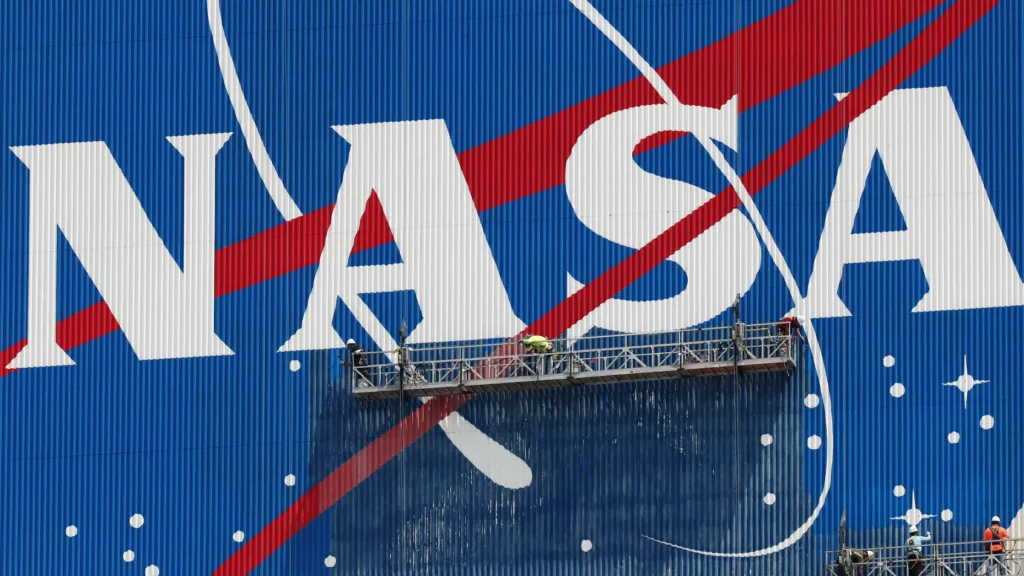
When humankind first gazed up at the stars, it was to dream. Today, we not only watch the skies — we watch them from our screens. In a move that places together two of humanity’s greatest obsessions — space exploration and streaming entertainment — NASA is set to partner with Netflix to stream rocket launches starting this summer.
This unexpected linger that marks a fascinating intersection of science, technology, culture, and entertainment. It hints at a broader narrative about how we engage with big moments in science, and what the future of public space missions might look like in an age of digital immediacy and content saturation.
NASA: A Legacy of Public Spectacle
NASA has always understood the power of spectacle. From the grainy live feed of Neil Armstrong stepping onto the lunar surface in 1969 to the modern-day high-definition broadcasts of Mars rover landings, the agency has used media to capture pulses and inspire generations.
In the early days, watching a NASA launch meant gathering around a television set in your living room or huddling with classmates in school auditoriums. These events were communal, unifying experiences that transcended politics, economics, and borders. They stitched space exploration into the fabric of everyday life.
However, as the decades progressed and the shuttle program matured, public enthusiasm began to wane. Launches became more routine and less “must-see TV.” In an era where content is endless and attention spans are fractured, NASA has struggled to recapture the same widespread emotional resonance.
The New Media Landscape: From Television to Streaming
Today’s media consumption habits have fundamentally shifted. Streaming services like Netflix, Disney+, and Amazon Prime Video dominate global screens. According to Nielsen, in 2024 streaming accounted for nearly 40% of all TV usage in the U.S., a figure expected to climb. The idea of scheduled, appointment-based viewing is increasingly antiquated.
By joining forces with Netflix, NASA signals a bold new chapter in its outreach strategy. Instead of relying solely on their own NASA TV and YouTube channels, they are meeting audiences where they already are — on their couches, laptops, and smartphones, immersed in curated content ecosystems.
The Netflix Factor: A Cultural Juggernaut
Netflix has transformed from a DVD rental service in the early 2000s to a global entertainment powerhouse, redefining storytelling and how audiences engage with content. Its user base surpasses 250 million subscribers worldwide, making it a cultural force capable of turning niche subjects into mainstream obsessions.
Consider how Netflix documentaries like Tiger King, The Last Dance, and Drive to Survive have sparked global conversations. Netflix has a unique talent for transforming seemingly esoteric topics into binge-worthy phenomena.
NASA, long accustomed to operating within governmental and educational frameworks, sees an opportunity to harness this storytelling magic. Through Netflix’s polished production, cinematic angles, and narrative flair, a rocket launch can transcend its technical nature and become an emotional, universally shared event.
Expanding the Audience: Beyond the Science Enthusiasts
Traditionally, NASA launches have attracted engineers, science educators, space enthusiasts, and students. While these communities remain essential, the Netflix partnership aims to reach demographics previously disengaged from space content — casual viewers, global pop culture consumers, and the ever-elusive younger audiences.
By streaming on Netflix, launches gain instant accessibility. They become discoverable on homepages, promoted alongside trending shows, and, crucially, available on demand. Someone who might never seek out a live rocket launch might stumble upon it while browsing after dinner. This accidental exposure can spark curiosity in ways targeted outreach cannot.
A New Kind of Live Event
One intriguing question is how Netflix, a platform designed for on-demand consumption, will handle live events. While it has experimented with live programming (such as Chris Rock’s stand-up special and the Love is Blind reunion), streaming a rocket launch represents a significant leap.
Rocket launches are unpredictable — delays due to weather, technical anomalies, or safety checks are common. Unlike a scripted show or sports event with buffer strategies, space launches are inherently uncontrollable. Netflix will need to blend its technological capabilities with NASA’s established expertise in live broadcasting, ensuring that viewers receive real-time updates and immersive coverage without frustration.
Moreover, Netflix might experiment with hybrid approaches: offering the main live feed alongside additional documentary segments, interviews with engineers, historical retrospectives, and cinematic behind-the-scenes footage. This approach could turn each launch into a mini-content festival, rather than a single ephemeral moment.
The Power of Storytelling: Emotional Hooks and Human Faces
NASA’s decision to stream on Netflix isn’t just about numbers. It’s about narrative. Each launch is a culmination of years of design, testing, failure, and iteration. It’s the product of countless hours by thousands of scientists, engineers, and support staff. Yet, these human stories often remain invisible behind glossy animations and technical briefings.
Netflix’s prowess lies in humanizing complex subjects. Viewers don’t just want to see a rocket take off — they want to understand what drives the people who make it happen, the stakes involved, and the ripple effects on science and society. By weaving these emotional layers into the broadcasts, Netflix can transform space launches into deeply resonant storytelling events.
Cultural Implications: Space as Global Entertainment
Space exploration has always been a global endeavor. However, media coverage historically catered to national pride — the U.S. vs. USSR space race being the prime example. By partnering with a global streaming service, NASA repositions its missions as shared human achievements rather than purely national milestones.
This democratization of access is profound. A child in Brazil, an artist in South Korea, or a retiree in South Africa can watch the same launch at the same time, fostering a sense of global unity that traditional media rarely achieves.
Commercial Considerations: The New Space Economy
This move also subtly supports the emerging space economy. NASA’s collaborations with private companies like SpaceX, Blue Origin, and Boeing highlight a future where space is both a scientific frontier and a commercial playground.
By bringing launches to Netflix, NASA helps normalize and publicize commercial partnerships, inspiring future investors, engineers, and policy makers. Public perception is crucial for continued funding and policy support, and greater visibility on a mainstream platform ensures space exploration remains on the public agenda.
Potential Risks and Criticisms
Not everyone will welcome this development. Purists might argue that broadcasting launches on a for-profit entertainment platform risks trivializing serious scientific work, turning it into mere spectacle rather than a solemn, awe-inspiring moment.
Moreover, concerns about editorial control and commercialization will arise. How will Netflix present failures, delays, or setbacks? Will there be pressure to dramatize events beyond scientific accuracy for entertainment value? These questions must be addressed transparently to maintain NASA’s credibility and educational mission.
Educational Opportunities
On a more optimistic note, this partnership presents massive educational potential. Supplementary content could include interactive modules, behind-the-scenes documentaries, and explainer segments about rocket science, astrophysics, and engineering.
Classrooms around the world could incorporate these launches into curricula, supported by high-quality, engaging educational content tailored to diverse age groups and cultural contexts.
The Broader Context: Streaming’s Live Future
Netflix’s foray into live events is part of a larger trend as platforms seek to diversify beyond on-demand viewing. Amazon Prime Video has secured rights to NFL games, Apple TV+ has dipped into sports, and Hulu offers live TV bundles.
NASA’s launches offer a unique addition: a live event that is global, inspirational, and deeply rooted in human progress. It’s not about teams competing or characters fighting, but humanity advancing together.
What to Expect This Summer
While exact details remain under wraps, initial hints suggest viewers can expect multi-camera setups, exclusive interviews, immersive VR-compatible footage, and high-fidelity soundscapes designed to make audiences feel as if they’re standing at the launch pad.
Special guests — perhaps astronauts, engineers, or celebrity science advocates — may be included to boost excitement. Merchandising, live Q&A sessions, and integrated social media experiences could further expand the event’s reach and resonance.
A New Dawn for Space Watching
Ultimately, NASA’s decision to stream rocket launches on Netflix represents more than a new content experiment. It’s a statement about where we are as a society: connected, curious, and yearning for shared experiences in a fragmented media landscape.
If successful, this initiative could redefine public engagement with space, inspire future scientists and dreamers, and remind us that even in an age of endless content, there are moments — like watching a rocket blaze through the atmosphere — that can unite us in collective wonder.
Ideologue
In the years to come, we may look back at summer 2025 as a turning point, when space left the realm of specialized interest and became prime-time global entertainment. Whether you’re a lifelong space nerd or a casual Netflix browser, this partnership offers an invitation: to look up, to dream, and to remember that beyond the countless shows and movies lies a real, infinite universe waiting to be explored.
Through this bold move, NASA and Netflix are not just streaming launches — they’re streaming possibility itself.
No comments yet.








